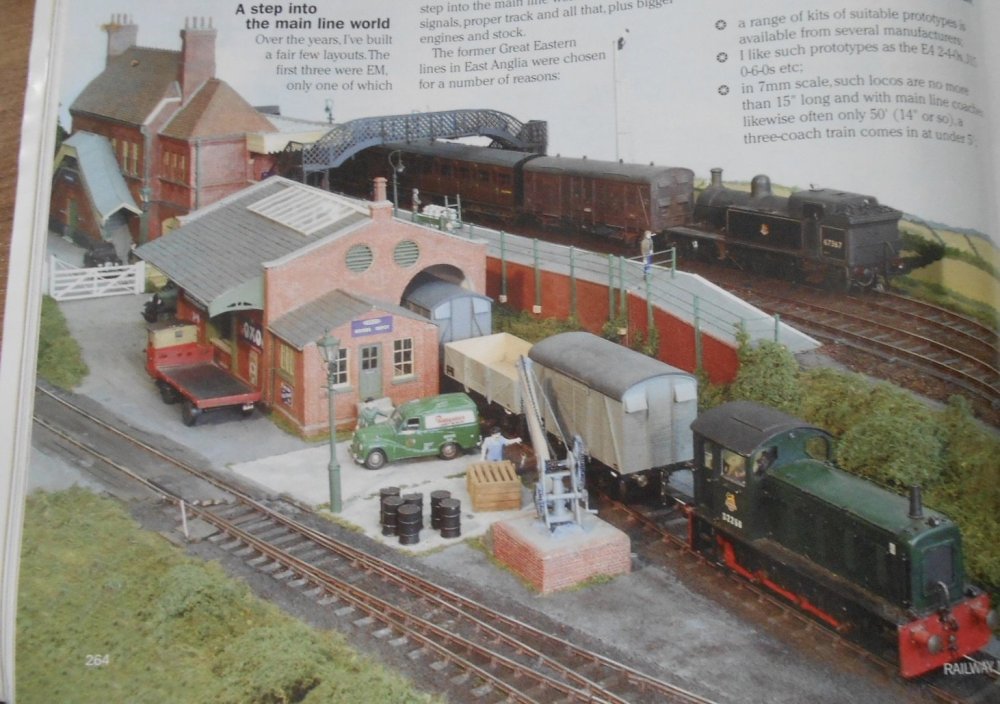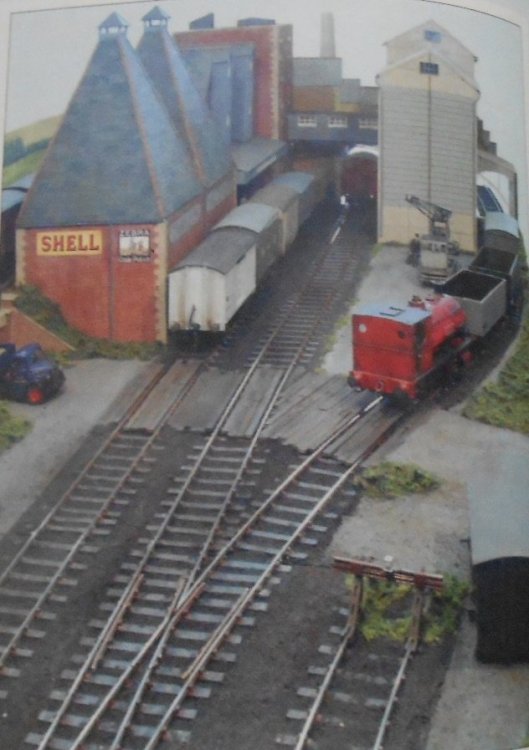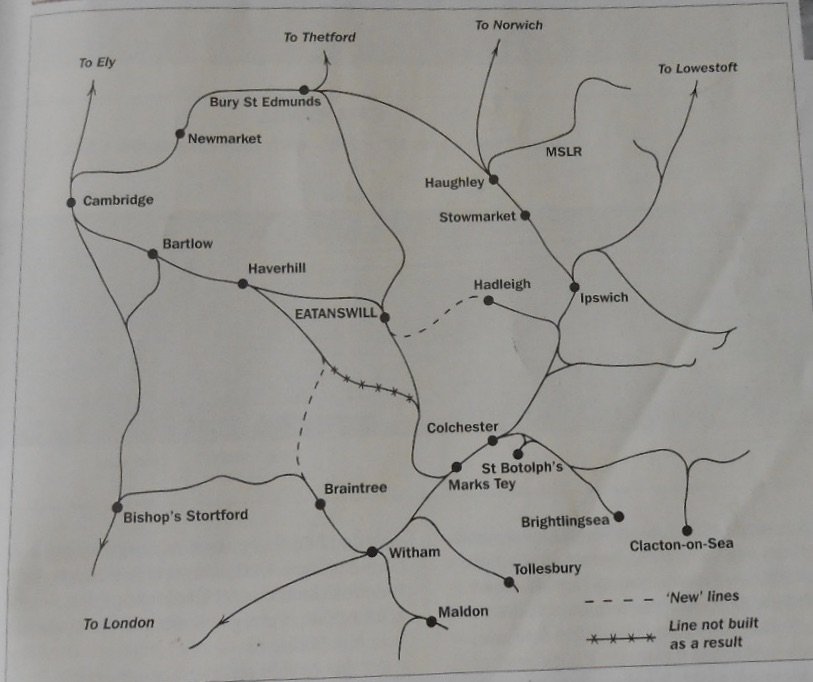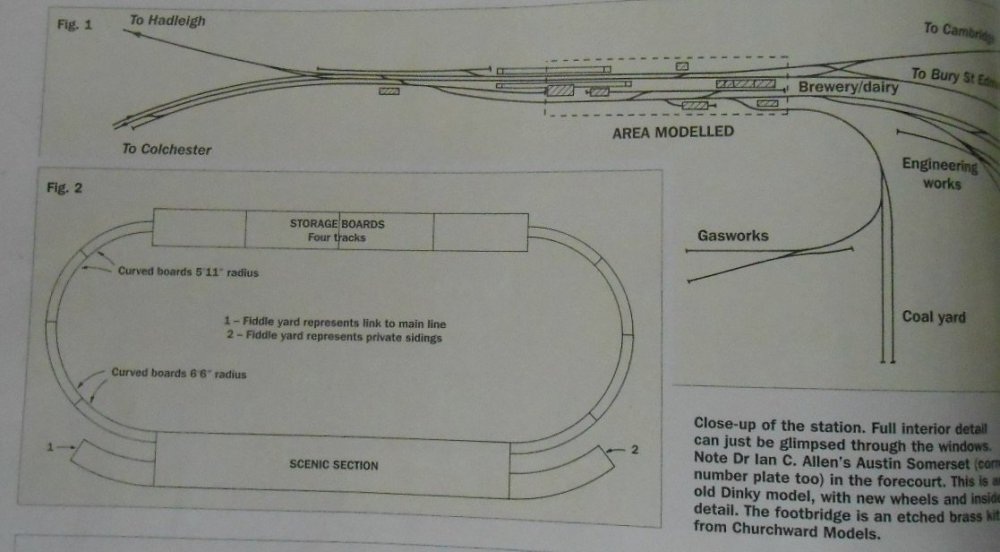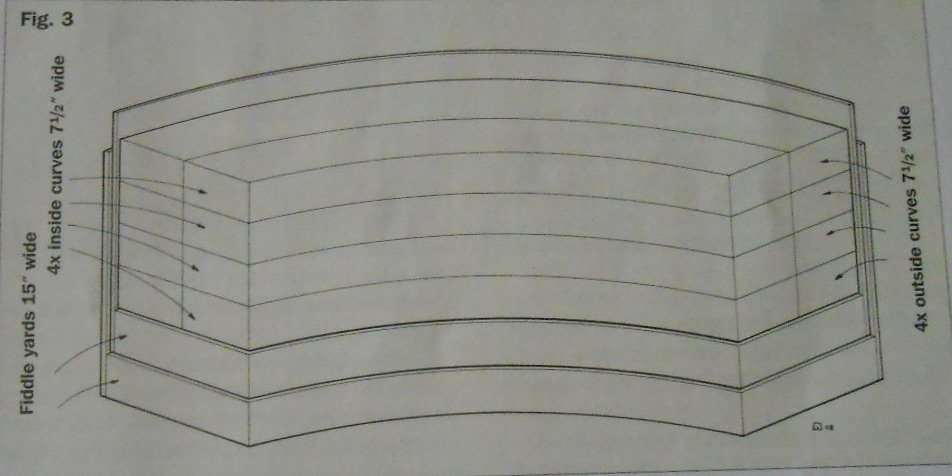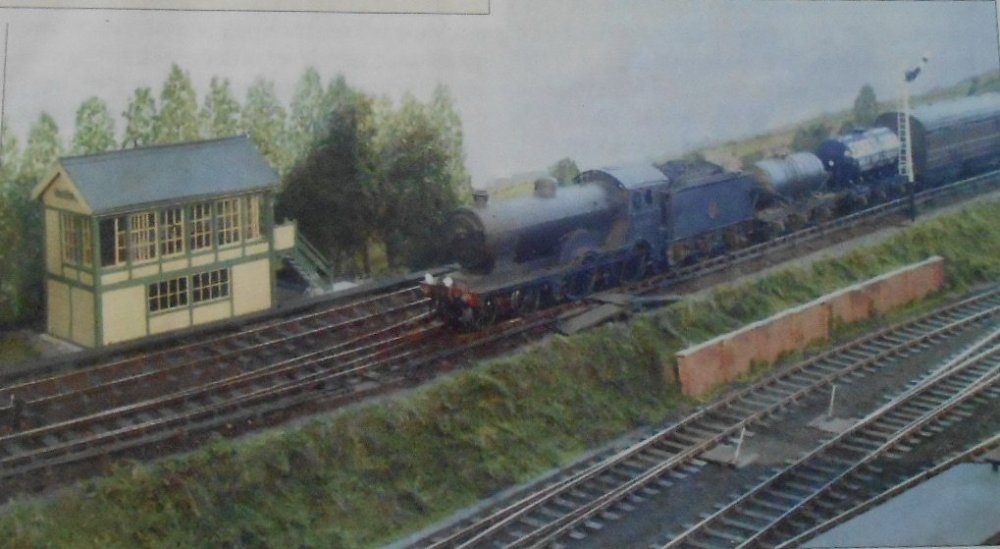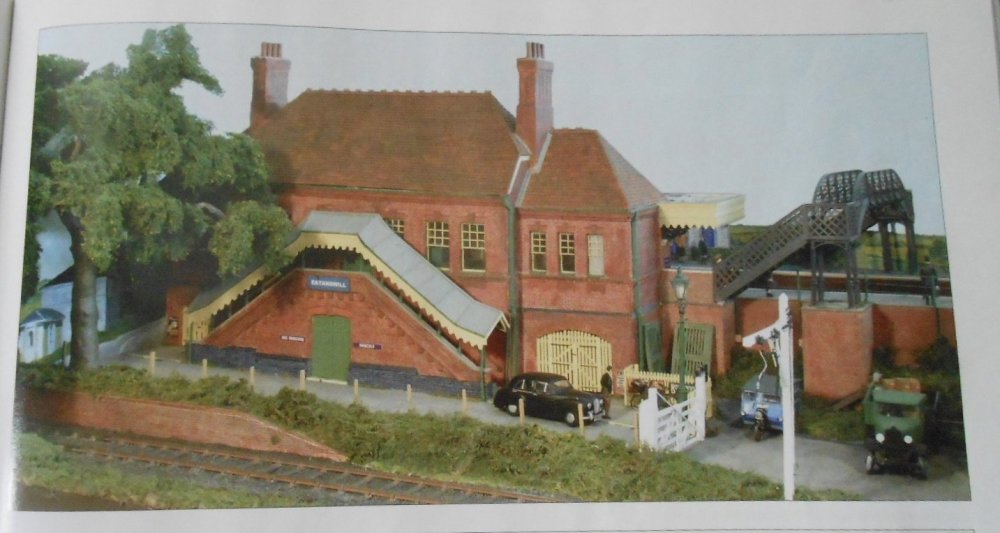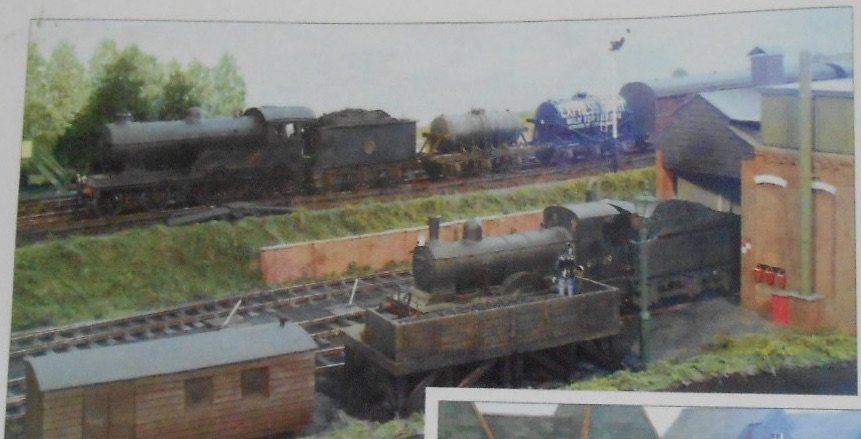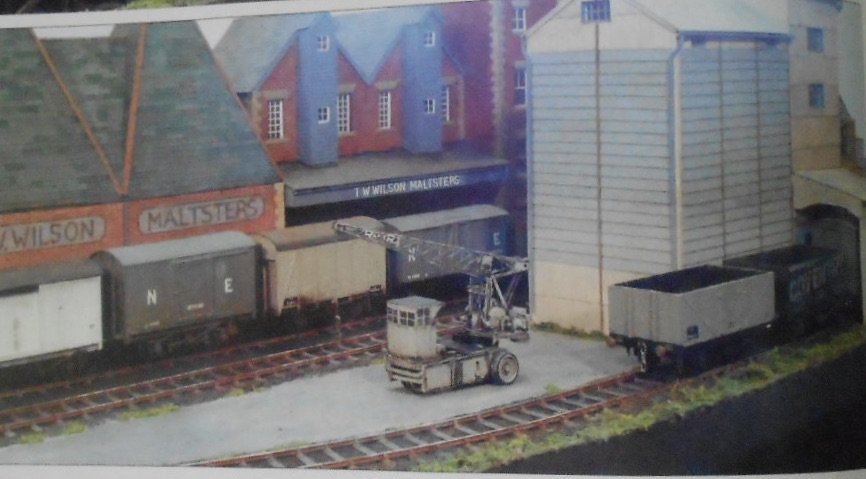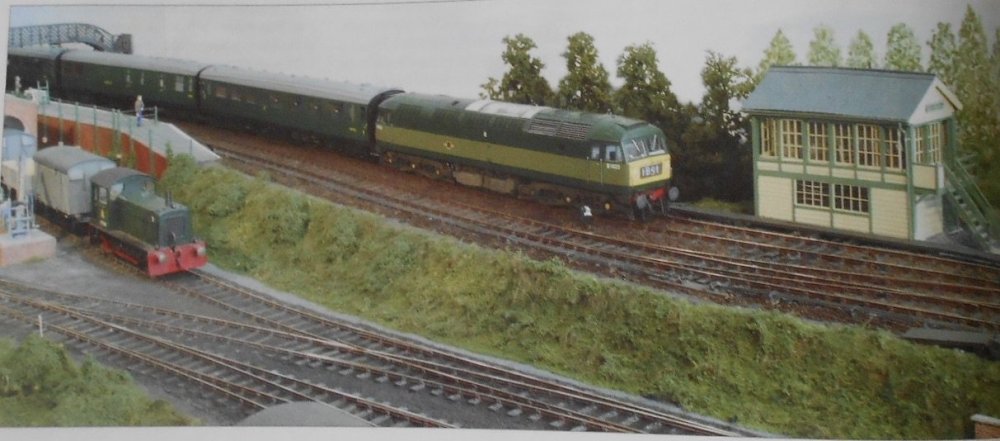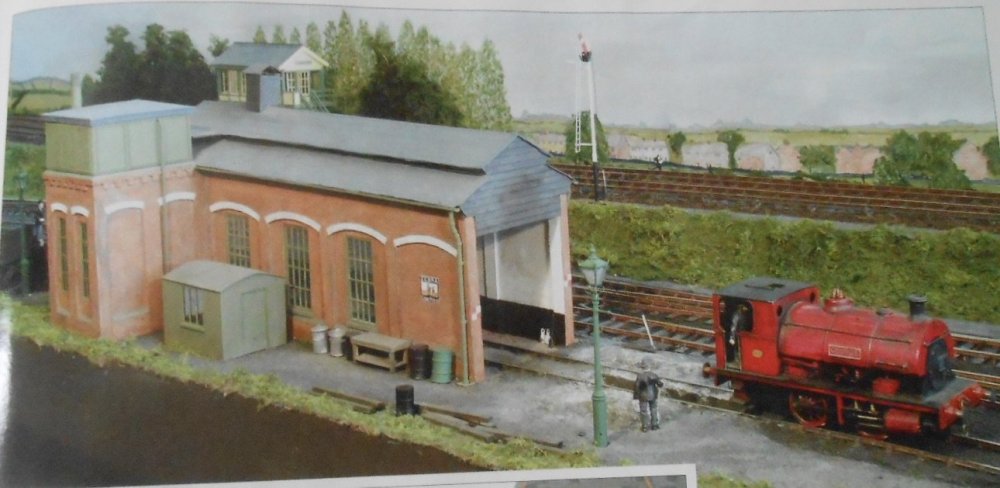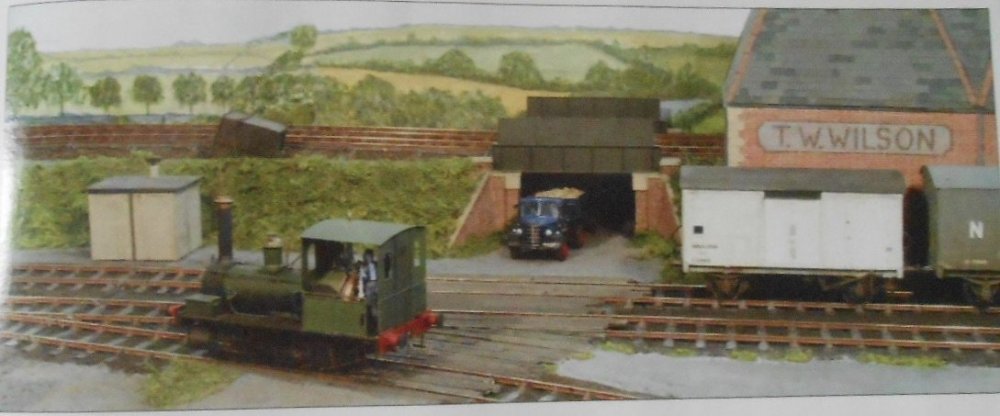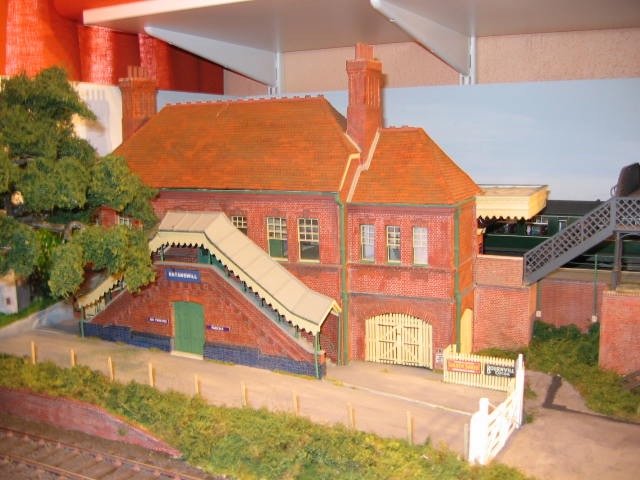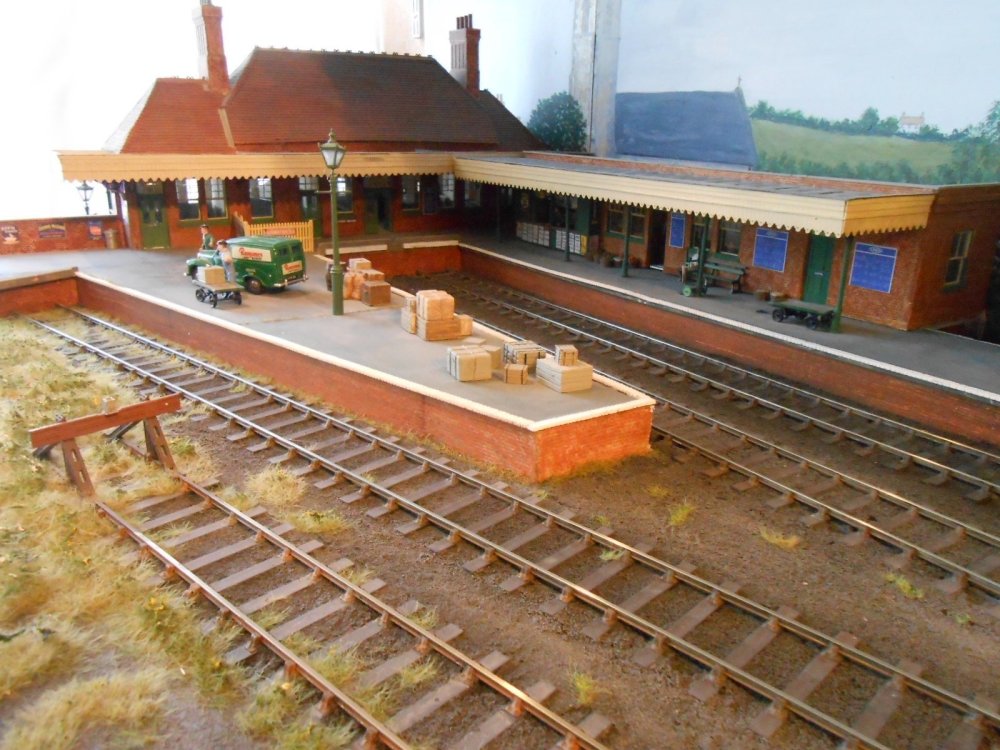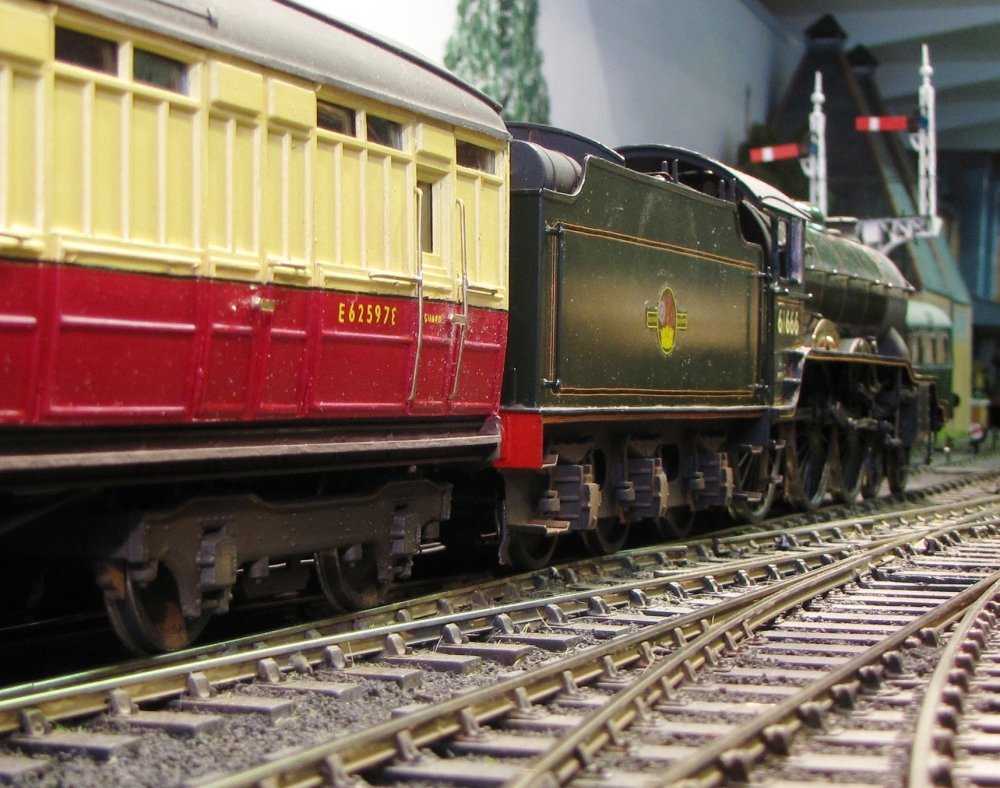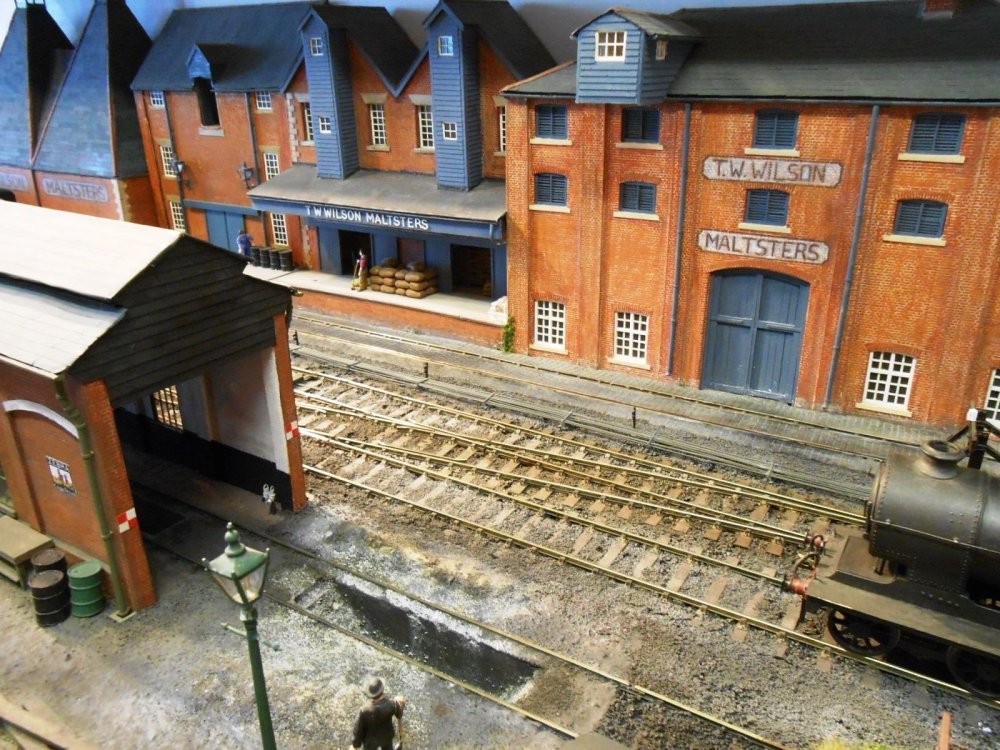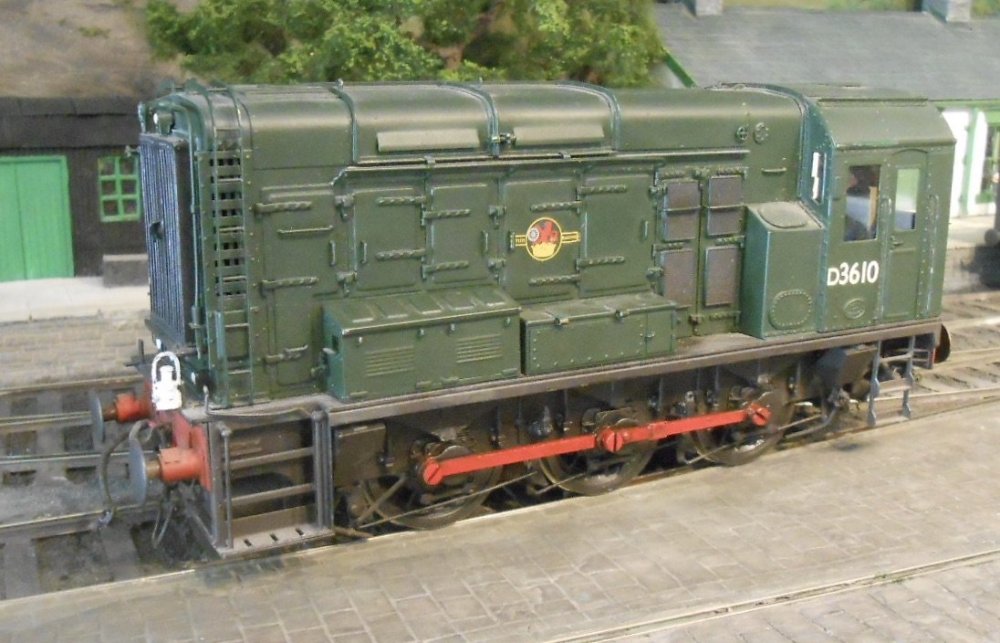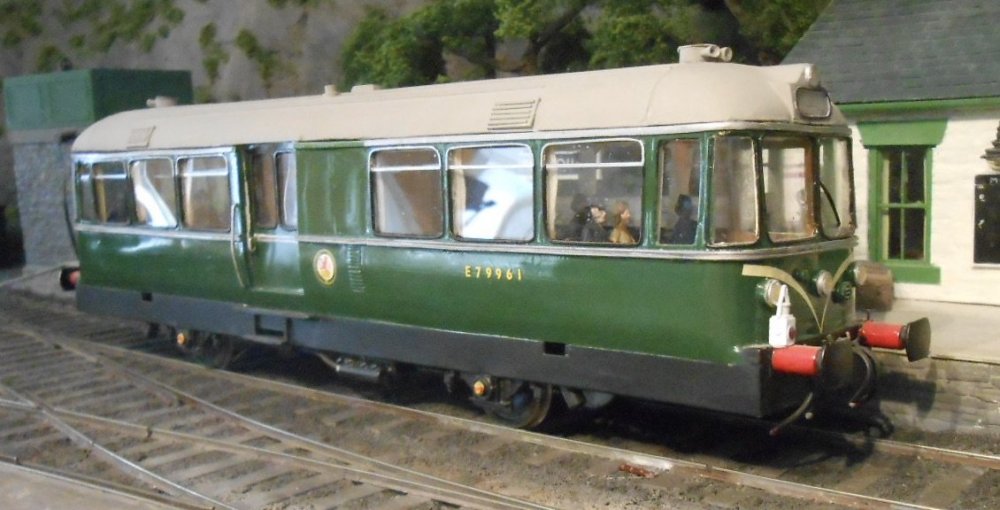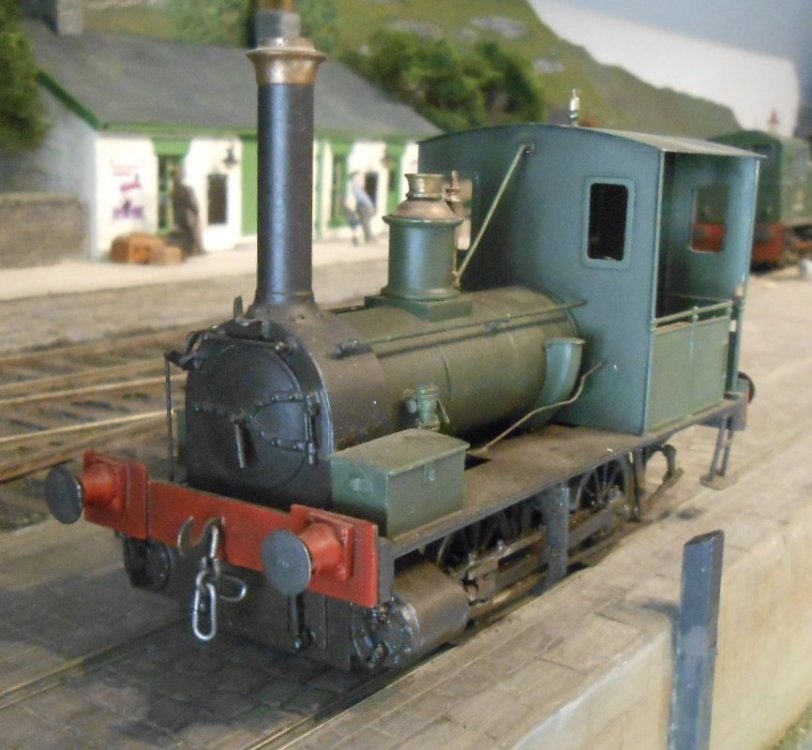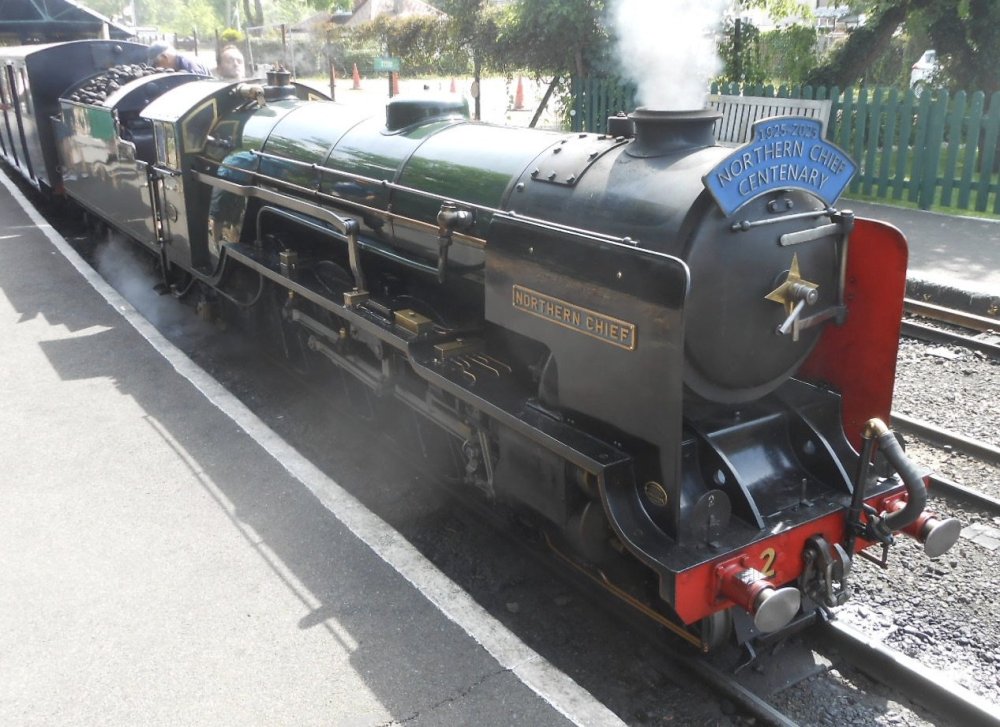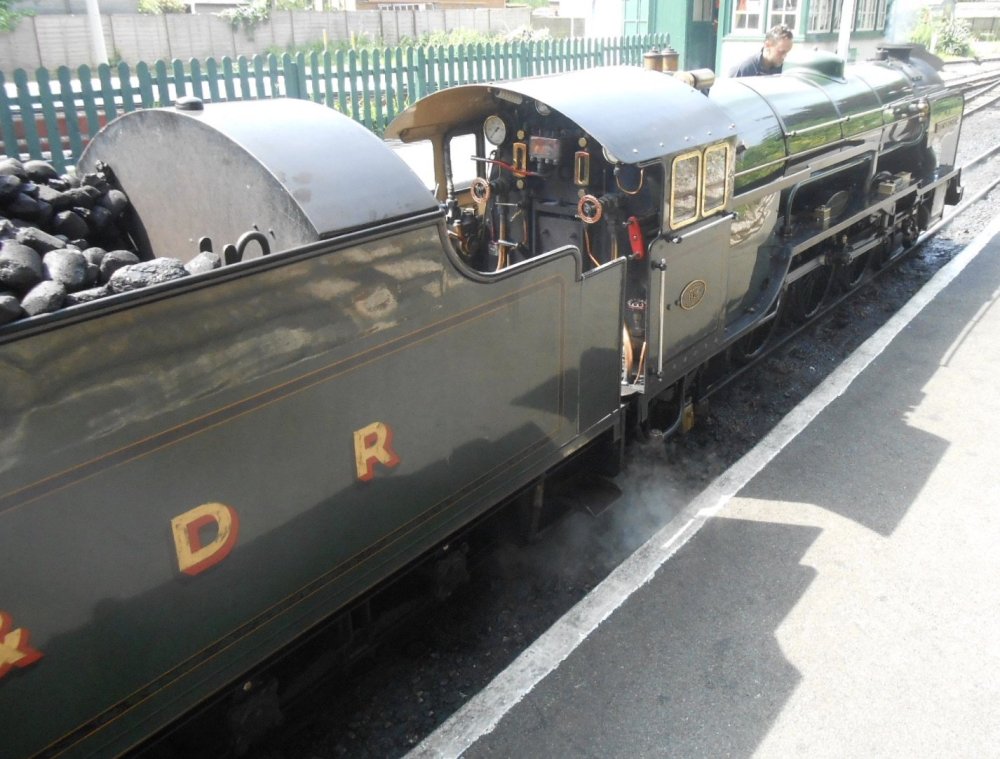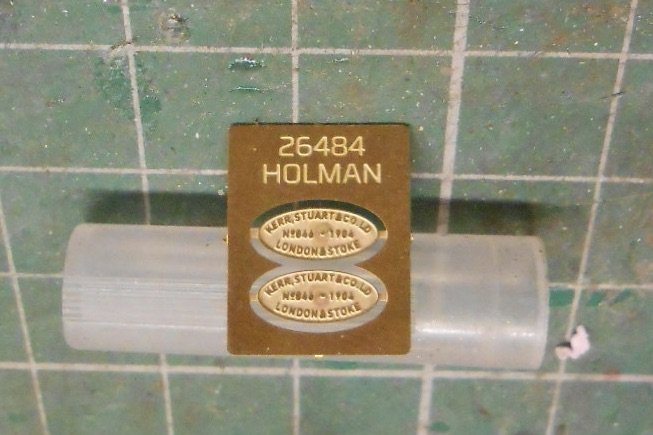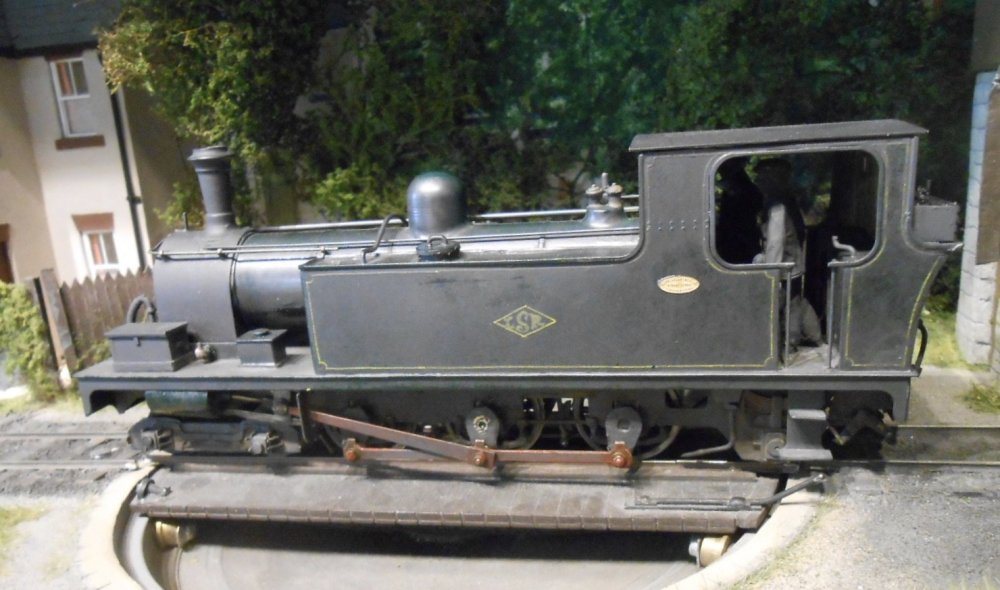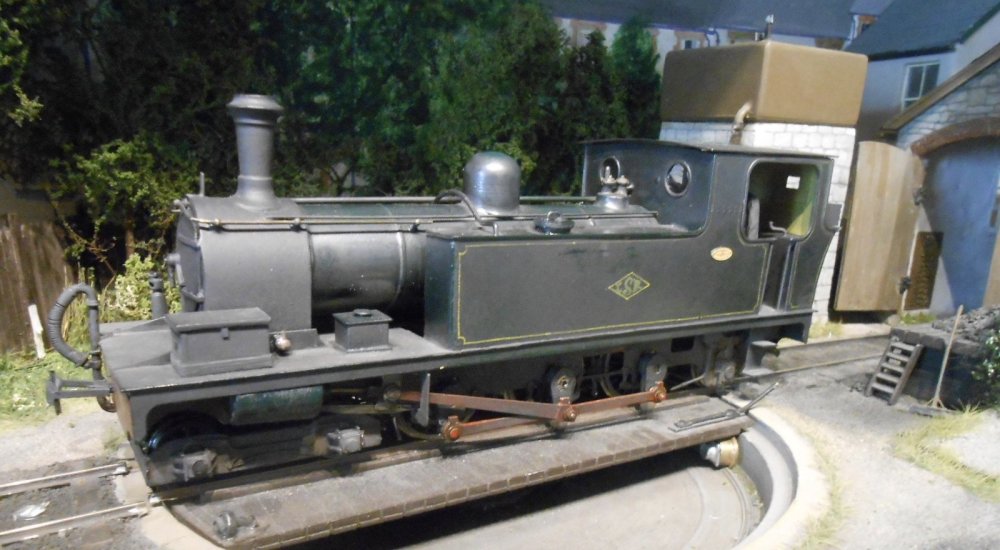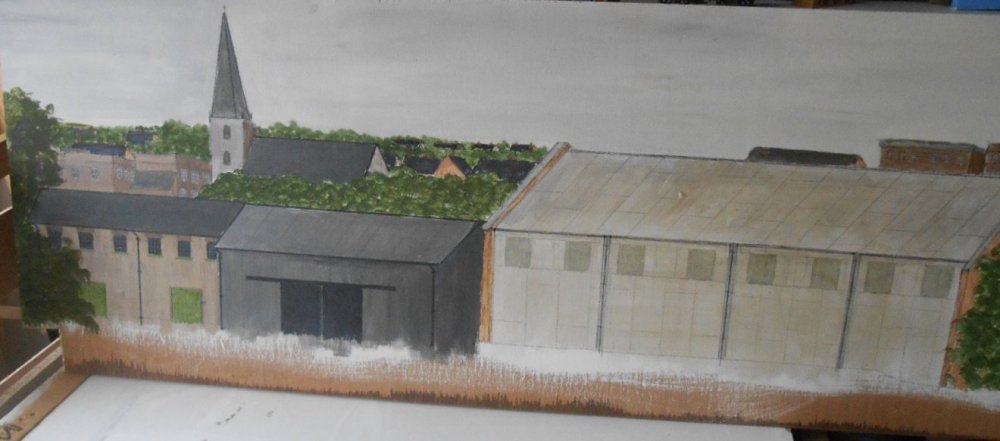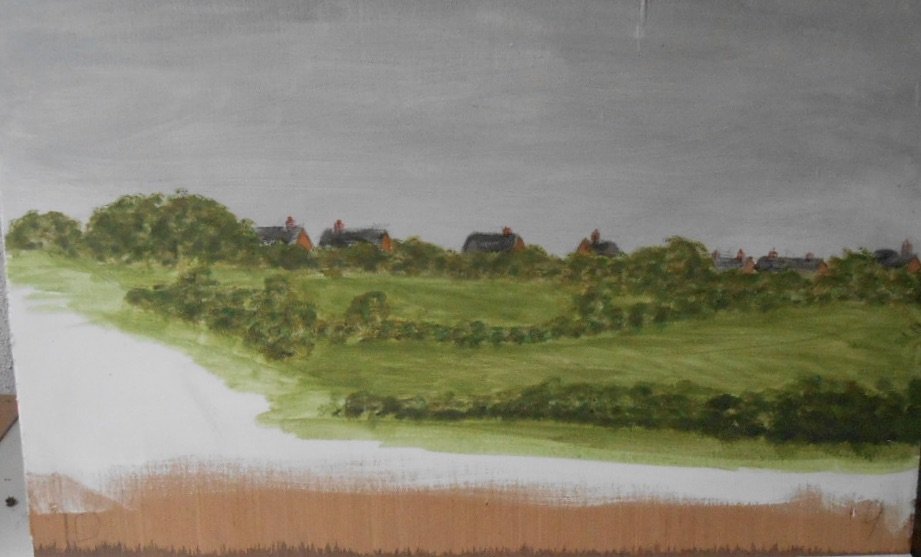
David Holman
Members-
Posts
4,154 -
Joined
-
Last visited
-
Days Won
114
Content Type
Profiles
Forums
Resource Library
Events
Gallery
Blogs
Store
Community Map
Everything posted by David Holman
-
Always though Courtmacsherry was a near perfect branch terminus. Loco shed or school to hide the fiddle yard, estuary in front, row of houses behind. Andy Cundick has done a very fine model of it, to scale in 4mm, but you could compress it down to much less. Even in 7mm, the essentials will easily fit into 3m or so. When we visited a few years ago, there was a race meeting on the 'strand'. An oval course had been marked out, with all the horses and jockeys gathered on the sea front above. A good crowd was there for the action, with the bars doing a roaring trade. Lots of music too. Magical!
-
Lovely stuff John. Plus nothing in the Work bench threads for several days and then you come up with two of your own. No excuses from me - really need to extract the digit.
-
Always interesting to see layouts progress. Like the forced perspective and don't see why it shouldn't work - plus you can always control the viewing angles with strategically placed trees and bushes. Wondered why DAS had suddenly become hard to find
-
Eatonswell This layout was built in the early 2000s, in a pre-digital age - for me anyway. Hence most of the pictures here are photos taken of my article in the April 2009 edition of RM. Eatonswell was my first attempt at 'mainline' modelling, trying to depict a secondary line in East Anglia in the 1950s, as shown in the map below. The scenic part of the layout was about 16ft x 2'6, divided into four split level boards as shown below. As in many of my schemes, even in this relatively large area, it relied on off scene sidings to develop the scene, though as I wrote at the time a 16ft scenic section out of a total run of about 70ft wasn't exactly good value for exhibition managers. The eventual intention was to grow the scenic areas over time, but it soon all became too much to organise. Might have worked as a club project, but not a solo one! Indeed, the only thing that made it work in the first place was the innovative idea of making each 180 degree curve in two sections of different radii, so they could 'nest' with each other for storage and transport. RM staff did a nice job on all these drawings and likewise the actual track plan. As can be seen, the goods yard was at a lower level and fed by two separate fiddle yards, which used cassettes. Overall then, this supposed solo enterprise actually needed at least five operators, though with that level of help, we could get it set up in about ninety minutes and back in the van in about 30. Apologies for the poor quality of some of the photos. I'll do some up to date ones as stuff is being got ready for the Chatham Show this year. The photo was taken after the layout became end to end, in which form it managed several shows because it took up much less space. All things being equal, nearly 20 years on, it is nice to reflect on what, while ultimately a bit of a blind alley, still looks pretty good and actually ran well too [it was DCC by the way]; shame it was all a bit too big for me to manage...
-
Thanks folks. Have occasionally thought about moving the wheels out on Shannon, but the loco is so tiny, there just isn't room.
-
Going through my 0 gauge stock to get it ready for the Club layout's appearance at the the Chatham Show next month, thought it might be of interest to share what I got up to in the years prior to 2012, when I started modelling the Irish scene. After initially dabbling in EM gauge and then 7mm NG I eventually moved to 0 gauge with a Light Railway layout called Loose End - a Colonel Stephens essay of which there are no digital photos available, but which appeared several times in the Modeller from the late 90's. The next project was somewhat grandiose - a 10m x 4m oval, with a high level secondary line, modelled on the Marks Tey - Cambridge line which also included a low level goods yard. It was all way too big for a solo project, so eventually it got scrapped, but not before I salvaged the buildings to create a more sensible terminus-fiddle yard layout. It was called Eatonswell - an adaption of Eastanswill, which was the name Charles Dickens allegedly gave to Sudbury in Suffolk in the Pickwick Papers. Very much BR 1950s Eastern Region, I built a far bit of stock, which has been confined to either boxes or my display cabinet for far too long, so it will be nice to run some of it again. Below are some pictures covering a selection of views of the layout. The station was a fairly accurate copy of Chappel & Wakes Colne - chosen because of its two level design. I used Howard Scenics embossed brick papers, painted with water colours . The goods shed was a standard Great Eastern design, while a row of matings were inspired by those at Hadleigh and Snape. The loco shed was Saffron Walden. Pride of the line was my B17/6 "Nottingham Forest". My home town club, the loco itself did work in East Anglia. The Gresley Brake 3rd is a Kirk kit. Proof that I'm not entirely averse to ready to run models are the two shunters. Both are Bachmann Brassworks, which came unpainted in those days. The 08 needed a fair bit of detailing, but is a nice runner, while the 03, which also runs well, simply got a paint and weathering job. At the other end of the scale is this Waggon & Maschinbau railbus - because it was scratch built. A real challenge with all those complex curves to say nowt about the curved front windows. Finally, for now, one of my favourite models, the George England Wantage Well Tank. I'd started building it for Loose End when, very fortuitously Model Railway Journal ran a series of articles by Laurie Griffin as a scratchbuilding project. Even better was the fact they produced a range of castings to go with it. Building this little loco taught me a lot and gave me the confidence to later tackle a D16 4-4-0, leading eventually to all my Irish stuff. One day, I really must build a small shunting layout so this pretty little engine can run regularly again. Hopefully more stuff will appear later.
- 8 replies
-
- 12
-

-

-
While 3D printing may be the way forward for many things, don't forget about old school stuff like copperclad or ply and rivet sleepers. There is always the C&L method of plastic sleepers and separate chairs too, fixed with solvent, for anyone who wants to avoid soldering. Making track is a long way down my list of favourite pursuits, but on my 21mm gauge Fintonagh layout, I found I could construct a turnout in about an hour, using Code 83 fb rail and copperclad sleepers and Tempo of templates. The latter were the 'standard' three foot radius "Irish EM", printed straight from the website. Although 20.2mm gauge, it was easy to enlarge them to 21mm on the copier. Crossing and checkrail clearances used are the standard one millimetre for 4mm finescale. Both 4mm scale and Slaters 7mm scale narrow gauge wheels are fine with this combination, using 19.2mm back to backs. The main work involved in making your own points is first of all sourcing 21mm track gauges. Mine is a roller gauge, turned on the club lathe by a friend. The other job is filing rail to make the crossing vee and point blades. Neither are difficult, once you've made a couple, though worth noting that C&L supply both as ready made components, albeit only in bullhead rail. Anyone who has made their own track knows all this of course, but for anyone who hasn't, it is not had hard as it might seem. There again, there is Marcway of Sheffield, who are happy to take on commissions for trackwork and for any scale or gauge combination. Prices are about 50% more than Peco.
-
Heritage Railways in the Republic of Ireland
David Holman replied to Celtic_transport's topic in General Chat
It was my birthday yesterday & my wife organised a day out for me on the Romney Hythe & Dymchurch Railway. Considering it was a Wednesday in term time, there were reasonable numbers of visitors & an hourly train service to Dungeness. OK the Romney is 15" gauge, but is very much run like a real railway. Indeed, at Romney itself, I doubt there are many preserved lines in the whole of the country with that amount of track and points, to say nothing of the multi platform station with its overall roof. There were four trains and five locos in action to operate the service, while a day rover ticket was about £27.00 Our loco, Northern Chief, is 100 years old this year! Not sure what this has to do with preserved railways in Ireland, other than with half a dozen other preserved lines within an hours drive, it shows how lucky we are this side of the water. We had a lovely day out, so long may they prosper! -
Very neat. Had to do much the same on my sliding/rotating fiddle yard, where the bolts carry power to the track.
-
Heritage Railways in the Republic of Ireland
David Holman replied to Celtic_transport's topic in General Chat
Reopen Waterford - Tramore? -
Our 1970s built house has a breeze block garden wall, with vertical posts that are lightweight fb rails. The area has many old cement workings, a no prizes for guessing where the rail came from, especially as there was originally a much older house next door. Must have another look to see if I can find a maker's mark.
-
Heritage Railways in the Republic of Ireland
David Holman replied to Celtic_transport's topic in General Chat
Its true, there are many, many lines across the big island, even the Isle of Wight has one. It is probably because there is somehow a lot more interest in heritage transport, plus the population being 10-20 times bigger with plenty of large towns and cities close by. Where I live in Kent, we have the Bluebell, Kent & East Sussex and Spa Valley close by, plus the East Kent, Romney Hythe & Dymchurch Sittingbourne & Kemsley, Bredgar & Wormshill, Lavender Line - even Chatham Dockyard. All within an hour's drive and all seemingly doing well. -
Seems like not a lot of anything creative going on chez moi for a while now - mostly down to getting stuff ready for Railex. Next on the horizon is the Chatham Show in July - essentially more exhibition stuff of which more in a moment. First though a [very] small package came through the letter box the other day - the final piece of my Swilly 4-6-2T. It's the builders plates I'd ordered. And very nice they are too, so thank you Narrow Planet. Stuff for the Chatham Show now revolves around the Club's 0 gauge layout. Called North Circular, it is a 10m x 4m double track oval, based loosely on the Tottenham & Hampstead line, but in this case deemed to be following the approximate route of the North Circular Road, hence the title. The concept [dreamed up by yours truly] is to allow pretty much most trains from the BR 1950s and 60s to run in a simple setting. Apart from the storage loops at the rear, it is all plain track, with no points, though the ground levels vary so we have cuttings and brick arch embankments. It is all built to a moderate standard, with most buildings using brick and slate papers, plus commercial windows to make life easy. However, we decided that a back scene would be important. This started out as a pale grey sky [white emulsion & black acrylic], but the creative muse got hold of me & decided to something more creative, essentially a mix of urban scenery, ranging from parklands to housing and industry. Nothing too fancy, just an impression, so stippling acrylics for distant trees, with slate roofs poking out between/above, then a mix of felt pens, water colour pencils & the like for the details. There are 15 boards in total, four of them 1.2m x 0.4m, the others 0.9m x 0.4m, so quite a task. The pictures below give an idea of some of them & will post a few more when I get everything mounted on the layout.
-
The larger the scale, the closer assembly gets to the prototype it seems. Fascinating.
-
No need to apologise , I saw that big grey shed in the photo. Should be good, will not need years to complete and has decent operational/play value.
-
Some nice elements there, such as the view blockers at each end, plus a couple front/centre too, which will help break up the scene and make the layout look bigger. Worth making a small mock up of the whole scenic section from card to further test sight lines. For example, you may find that the large depot building dominates the scene, Perhaps have it covering the rear siding might be better, so the front one is open and stock stabled there isn't hidden.
-
It has always been cork floor tiles for me, simply because they come flat, are easy to cut and glue down nicely. That said, am fairly sure there is no benefit at all in sound deadening, but find this doesn't matter because at exhibitions there is always enough background noise to render such things redundant. Hence all about providing the ballast shoulder of mainline track. Baseboard joins are a real issue on exhibition layouts, with earthquake cracks often very evident. Trick I learned from Gordon Gravett is to used car body filler between the joints. Put a layer on one face, then cover with cling film and clamp/bolt the boards firmly together overnight. Gives an almost invisible join, though same sort of thing required For whatever scenic go on top. For ballasting, I fix about 5cm worth either side of the join with undiluted pva. Again, leave overnight and, crossing everything beforehand, break the boards apart when dry and this (usually) leaves a nice irregular join which disappears when the boards go together again.
-
Converting a 00 Jinty to 21mm has anyone done it?
David Holman replied to Bob49's question in Questions & Answers
The biggest problem is likely to be the front splashers, because moving the wheels out to 21mm will certainly foul them. Clearances inside the tanks could also be a problem because of the thickness of the plastic moulding. Indeed, regauging the prototype caused similar problems, with the wheels being thinned. At the very least you will be looking at cutting off the current splashers and making new ones. Then there will be new axles, as the existing ones will be way too short. Hence wheels will need removing ( probably crank pins and rods too) along with the main gear. If this is nylon and a force fit, that could also be a problem because of it splits, then you'll need to source a new one. Once the wheels go back on, they will need to be quartered, so all in all, not an easy or quick fix! -
Clever thinking for the traverser! Nice too that you can use fairly tight radius curves for the off scene sections to keep the overall footprint compact. The fact that it all aligns nicely is a real challenge on a sectional exhibition layout, so definite pat on the back there! Did it once in 0 gauge. The layout was about 30' x 12' of which only the front 16' was scenic. Took it to the Chatham Show, but didn't get any more invites for some reason... Changed it to cassettes each end and suddenly the number of operators needed doubled, so your solution is definitely the right one. Presumably, only the layout and sector table will need substantial support, with the curves cantilevered off them and maybe just simple pillars in strategic places for the curves. Minimising the amount off "stuff" to set up, transport etc is crucial in making exhibiting tolerable - but am sure you know that! Great idea and will make a lovely way to show off all your fine models. Good excuse to build some coaches too!
-
Hmm... when does selective compression cross the Rubicon and become 'might have been' or just pure fiction? Have had this discussion with myself, because of the space considerations, numerous times and the prototype almost always loses out. The one (semi) exception was a layout based on Wantage Town, which even in 7mm scales out at just over seven feet. I always applaud those who pursue the prototype route, though apart from Andy Cundick of this parish, there is usually still a compromise somewhere. Equally, with so many proposals that never got started, there are plenty of options to stir the creative juices. Hence I always end up starting with the available space and simply make something to fit it. Can see why Fenit is so tempting (like Foynes too with its overall roof), but if you change it too much will it still be Fenit - or would you have to change the middle consonant (e.g. to a k) because it is no longer quite right? One thing not in doubt is that whatever you end up building will be thoroughly researched and beautifully crafted, with lots of entertainment along the way.
-
IRCH standard goods vans - wooden framed variant
David Holman replied to Mol_PMB's topic in General Chat
Lovely stuff and very much filling in some of the mysteries of general Irish goods stock. -
Splendid! Serious rivet (?) press there too.
-
It is certainly all part of the hobby's evolvement. Often say that, if I was starting again, I'd probably stick with rtr for stock. For me, the problem is finding scratchbuilding parts, like coach bogies, w-irons, axles boxes and the like. The ranges available are now much less than ten years ago, so it is a good job I have most of the stock I need, especially for broad gauge.
.png.c363cdf5c3fb7955cd92a55eb6dbbae0.png)

